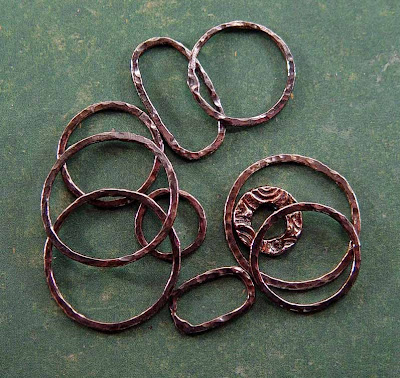 Two little ornaments.
Two little ornaments.Cast in plaster, hand painted and made to look very ancient and old.
The Father Christmas with the tree clutched in his blue mittened hands, wearing his red hat and coat. His nose is nipped with the cold.
The little Toy Soldier in his black hat and boots, gold shoulder patches and red jacket.
Headed off in a specially handmade box, nestled into red colored straw.
Going to their new home, to decorate and celebrate the holiday season and year ending.
To nestle in the branches, or peer out from the depths of a wreath.
Or maybe to perch on top of a package wrapped in gold and silver paper.


















































